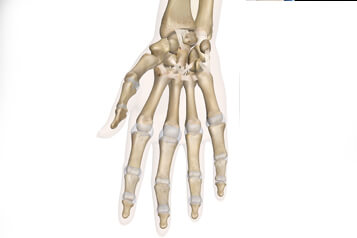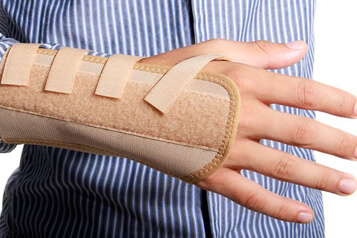Wrist Sprain
What Causes A Wrist Sprain?
Wrist is made up of small bones which are connected & surrounded by ligaments and cartilage that allows for movement & cushioning ofbones from rubbing against each other. If any of the ligaments in the wrist get damaged due to movement-such as an extreme bend, twist or some direct impact that impels the wrist into a position over its normal range of motion, then there is a chance of sprain.
Usually, wrist sprain is mostly seen in athletesof various sports such as football, skiing, cycling,snowboarding, diving, basketball and gymnastics. Wrist sprains may also cause in boxing or weightlifting, especially in athletes with poor punching or lifting techniques.
What Does a Wrist Sprain Feel Like?
Symptoms of a wrist sprain include:
- Pain
- Tenderness & warmth around the injury
- Swelling or bulging
- Bruising
- Sensation a popping or tearing in wrist
Wrist Sprain Diagnose process
Usually, doctor will do a thorough physical exam to diagnose a wrist sprain. Further patient might also need an:
- X-ray
- Arthrogram in which a special type of X-ray or MRI done after injecting a dye into the wrist
- MRI (magnetic resonance imaging)
- Arthroscopy is a minimally invasive surgery , in which a micro camera is inserted into the wrist
How to Prevent a Sprained Wrist?
It is difficult to prevent wrist sprain because they are usually caused by a sudden accident, but there are few steps that can reduce the risk for injury:
- Always becareful when walking or running on slippery or wet surfaces
- Try to oppose the urge to put out hand(s) during a fall
- Do wrist-strengthening exercises, prescribed by a physical therapist
- Individuals who have already injured their wrist or athletes of sports such as snowboarding, skiing, cycling and skateboarding; are suggested to wear a shielding brace or support with tape, as it prevent the wrist from extra unwanted bending.

To speed the healing, you can:
- Rest your wrist for at least 48 hours
- Ice your wrist to reduce pain and swelling. Do it for 20-30 minutes every three to four hours for two to three days, or until the pain is gone.
- Compress the wrist with a bandage.
- Elevate your wrist above your heart, on a pillow or the back of a chair. As often as you can.
- Take anti-inflammatory painkillers. Non-steroidal anti-inflammatory drugs (NSAIDs), like Advil, or Motrin, will help with pain and swelling. However, these drugs can have side effects, like an increased risk of bleeding and ulcers. They should be used only occasionally, unless your doctor specifically says otherwise.
- Use a cast or splint to keep your wrist immobile. This should only be for a short time, until you see the doctor. Then follow the doctor’s advice about whether or not to continue using a splint. Using a splint for too long can result in more stiffness and muscle weakness in some cases.
